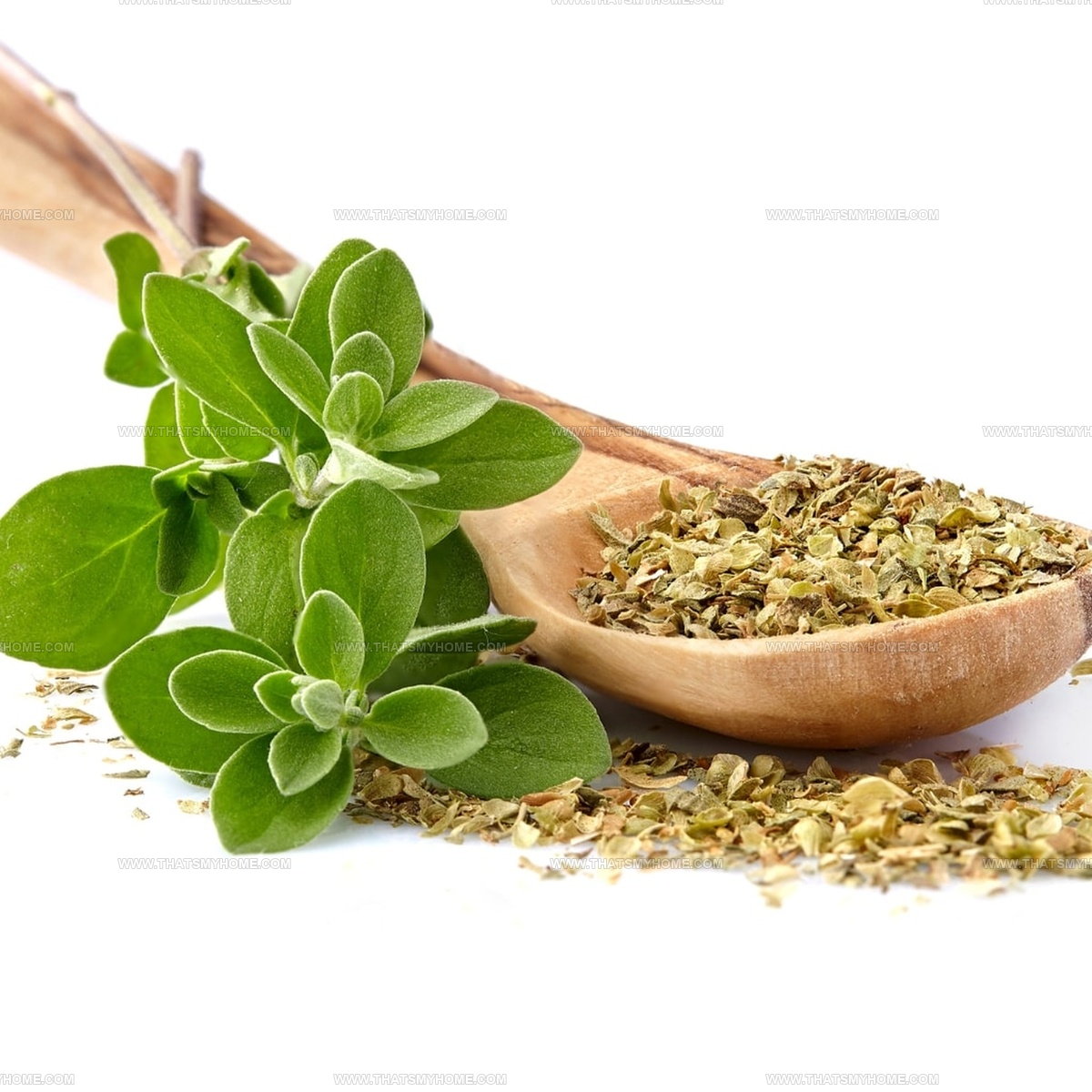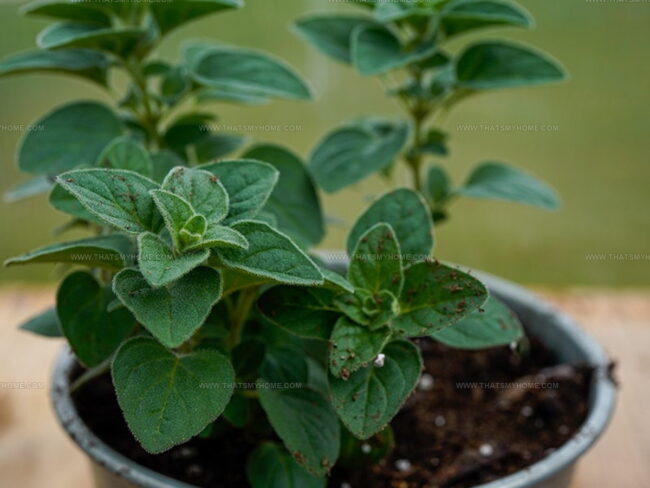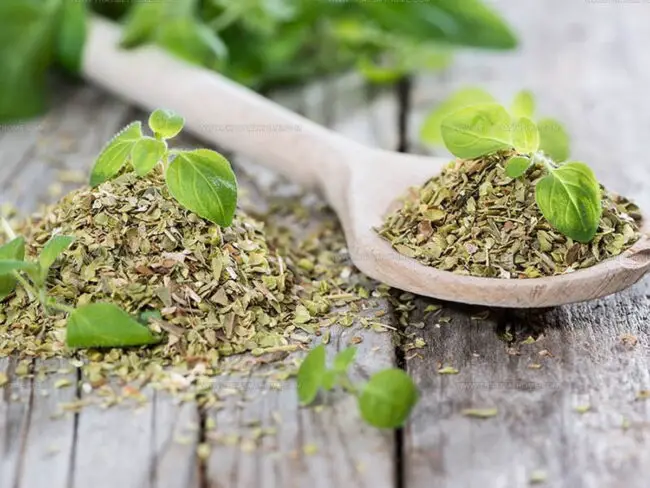13 Fresh Herb Swaps When Oregano Is Missing From Your Pantry
Oregano is a staple herb in Mediterranean and Mexican cuisines, prized for its robust, slightly peppery flavor.
When oregano isn’t accessible, alternatives like marjoram, thyme, or basil can bring complementary herbal notes to your dishes.
Some substitutes offer milder or sweeter profiles, so choosing one depends on your recipe’s flavor goals.
These thirteen best oregano substitutes provide reliable options for authentic seasoning.
Understanding how each herb interacts with other ingredients helps maintain the intended taste.
These alternatives keep your recipes flavorful and versatile despite ingredient shortages.
Learn how to effectively replace oregano in a wide range of dishes.
What Is Oregano?
Oregano is a leafy green herb with small oval leaves and a bold, earthy flavor. It grows in warm climates and belongs to the mint family, though its taste leans more peppery than sweet.
You’ll often see it in Italian, Greek, and Mexican dishes. Its name comes from Greek words meaning “joy of the mountain,” and it’s been used for centuries both in cooking and as a natural remedy.
Farmers often harvest and dry it during summer when its oils are most fragrant.
Key Flavor Characteristics of Oregano
What Options to Replace Oregano
Oregano adds earthiness and a touch of spice. If it’s not on hand, you can still get that savory depth. It’s about keeping the flavor harmony in your meal.
Marjoram
Marjoram has quickly become the perfect substitute for oregano in many kitchens due to its similar flavor profile but with a gentler, more delicate taste.
The subtle pungent spiciness of this herb makes it ideal for traditional Italian dishes like pasta sauces, pizzas, and Mediterranean cuisine where oregano typically shines.
For best results, simply use a 1:1 ratio when replacing oregano with marjoram, with dried versions working particularly well in most recipes.
Experimenting with this wonderful alternative might introduce new dimensions to familiar dishes and expand your culinary repertoire without requiring specialty ingredients.
Basil
Basil offers a unique sweetness that beautifully enhances dishes without overpowering their original flavors.
Many chefs prefer this versatile herb as a perfect 1:1 substitute for oregano in salads, pasta, and pizzas where it adds wonderful complexity to each bite.
Both fresh and dried basil work equally well as replacements, giving you flexibility based on what's available in your kitchen.
The herb's distinctive aroma instantly elevates Mediterranean cuisine while also complementing Asian dishes, making it more adaptable than oregano in cross-cultural cooking.
You appreciate how basil's bright flavor profile can transform even the simplest tomato sauce into something special without any extra effort.
Thyme
Thyme is an excellent oregano substitute with its similar flavor profile that chefs have treasured for centuries.
When your recipe calls for oregano but none is available, thyme steps in perfectly at a 1:1 ratio while adding its own distinctive aromatic quality to your dishes.
Many people find that fresh thyme delivers the most vibrant results, enhancing everything from Italian sauces to Mediterranean roasts with its earthy, slightly floral notes.
The herbs share enough common characteristics that most family members won't even notice the swap in your favorite recipes.
This ancient herb brings centuries of culinary tradition to modern kitchens while solving your ingredient emergencies with delicious results.
Italian Seasoning
Oregano substitution is simple with Italian seasoning, which perfectly captures that distinctive herb-forward flavor in one convenient jar.
Many cooks rely on this versatile blend containing basil, rosemary, thyme and other Mediterranean herbs when oregano isn't available in their pantry.
This ready-made mixture works beautifully in pasta sauces, pizza toppings, and marinades with a 1:1 replacement ratio for recipes calling for oregano.
The dried version delivers the best results, maintaining the aromatic qualities that make oregano so essential in Italian and Mediterranean cooking.
For an unexpected twist, Italian seasoning can even replace tomato sauce in certain dishes, proving its remarkable adaptability beyond being just an oregano stand-in.
Tarragon
Tarragon is an excellent substitute for oregano, offering similar flavor profiles with its own distinctive subtle notes that enhance various dishes.
In your cooking adventures, this versatile herb adds delicious complexity while still allowing original flavors to shine through in everything from marinades to stuffings.
The good news is that tarragon works perfectly in a simple 1:1 ratio when replacing oregano, whether you're using the fresh or dried version.
Many chefs appreciate how tarragon complements meaty dishes particularly well, creating depth without overpowering other ingredients.
Remember that while oregano has a more robust Mediterranean character, tarragon brings a slightly sweeter, anise-like quality that can actually improve certain recipes beyond the original herb.
Dill
Substituting dill for oregano can work well since these related herbs share similar aromatic qualities, despite dill's unique sweetness and gentle anise undertones that add dimension to various recipes.
For best results, experts recommend using only three-quarters of the called-for amount when making this swap to prevent the dill from overpowering your dish.
You appreciate that both fresh and dried forms of dill function effectively as replacements, giving flexibility based on what's available in the kitchen.
The substitution works particularly well in Mediterranean dishes, seafood preparations, and vegetable-forward recipes where the herbs' complementary profiles enhance rather than clash with other ingredients.
This herbal exchange represents just one of many possible flavor adjustments that allow for culinary creativity when specific ingredients aren't on hand.
Fennel
Fennel is an excellent stand-in for oregano in many recipes, providing an almost identical taste profile while adding a hint of newness to traditional Italian dishes.
Its natural earthiness can bring unexpected pizzazz to classic meals without veering too far from familiar flavors we know and love.
This versatile herb maintains a similar flavor intensity to oregano, making it easy to incorporate into your cooking routine.
For best results, you can substitute 1½ teaspoons of fresh fennel for every 2 teaspoons of oregano called for in recipes.
The subtle anise undertones in fennel complement tomato-based sauces particularly well, creating a delightful flavor dimension that many people find refreshing.
Rosemary
Rosemary makes an excellent substitute for oregano, adding a distinctive zing to vegetables, salads, omelets, sauces, and meat dishes alike.
Most chefs recommend using just 1/4 of the required amount when making this swap since rosemary's flavor can be more intense than oregano.
Both fresh and dried rosemary work well as substitutes, though the dried version has a somewhat milder flavor profile, allowing you to use slightly more than the 1/4 guideline.
Beyond its culinary versatility, rosemary contains notable antimicrobial and antioxidant properties that make this herb substitution not only delicious but also beneficial for your health.
The piney, aromatic character of rosemary can transform ordinary recipes into Mediterranean-inspired creations that family members will eagerly request again and again.
Sage
Sage offers a more subtle flavor compared to oregano, which often overwhelms dishes with its intensity.
This versatile herb perfectly enhances the natural sweetness in ingredients like onions and garlic while adding interesting depth to classic sides such as mashed potatoes.
The herb's distinctive color brings visual appeal to meals, making them look as good as they taste.
You can easily substitute sage for oregano using a simple 1:1 ratio in most recipes.
Fresh sage leaves provide the best results, though dried varieties work well when fresh options aren't available.
Fenugreek
Fenugreek has emerged as a popular oregano substitute in global cuisine due to its fresh, unique flavor profile that blends tangy, maple-like aromas with subtle sweetness and bitter undertones.
The leaves contain diosgenin, a powerful anti-inflammatory compound that offers health benefits while keeping calorie counts low.
For best results in your recipes, simply follow a 1:1 substitution ratio when swapping oregano for this versatile herb.
The aromatic quality of fenugreek can enhance everything from soups and stews to meat dishes without overpowering other ingredients.
Parsley
Parsley is a wonderful oregano substitute with its similar earthy flavor profile that complements many dishes perfectly.
Most cooks appreciate how this versatile herb pairs nicely with other ingredients while maintaining a milder taste than oregano.
The health benefits are impressive too, as parsley contains abundant antioxidants and vitamins that boost the nutritional value of any meal.
For best results in your recipes, dried parsley can replace oregano in equal amounts (1:1 ratio), though fresh parsley should be used at half the quantity due to its more pronounced flavor.
You often keep this adaptable herb on hand since it works beautifully in everything from pasta sauces to soups, making it a smart pantry staple for anyone who enjoys cooking flavorful meals.
Summer Savory
Substituting summer savory for oregano offers an exciting twist to Italian dishes when your spice rack is missing that essential herb.
This Mediterranean native brings a strong, peppery flavor with subtle hints of thyme and mint that can transform your cooking in unexpected ways.
Simply use a 1:1 ratio when making the swap, whether you're working with fresh leaves or the dried version.
Just one teaspoon of this zesty alternative provides an intriguing aroma and distinctive taste while giving traditional oregano a much-deserved break from its usual duties.
Many people find summer savory becomes their go-to replacement after discovering how beautifully it complements tomato sauces, pizza, and other dishes typically calling for oregano.
Ajwain Leaves
Ajwain leaves serve as an excellent oregano substitute with their distinctive oregano-like flavor plus an added spicy twang that elevates many dishes.
These leaves, sometimes referred to as bishop's weed or carom seed, can be easily used in dried or powdered form when fresh oregano isn't available.
Most cooks appreciate how ajwain maintains its potent flavor even after drying, making it incredibly convenient for last-minute meal preparations.
The 1:1 substitution ratio makes it straightforward to swap oregano for ajwain in virtually any recipe without complicated conversions.
For centuries, this versatile herb has played an important role in Ayurvedic medicine due to its powerful antioxidant properties that offer health benefits beyond mere seasoning.
Many home chefs who try ajwain often find that oregano seems rather basic by comparison.
Fresh vs. Dried: Which Substitute Works Best?
Fresh substitutes work best in quick or uncooked dishes because they taste light and add a clean, garden-like flavor. Dried ones are stronger and hold up better in slow-cooked meals like soups or sauces.
Some recipes need that gentle touch from fresh herbs tossed in at the end, while others benefit from dried leaves simmered slowly to build depth.
Matching the type of herb to the way a dish is cooked makes the flavors feel balanced and natural. Choosing between the two depends on how the dish is prepared and when the herb is added.




Michael Rivera
Co-Founder & Culinary Instructor
Expertise
Education
The French Culinary Institute (now part of the International Culinary Center)
Michael Rivera is a seasoned chef and culinary instructor based in San Francisco, CA. Trained in Classic Culinary Arts at The French Culinary Institute, he refined his skills in Michelin-starred kitchens, mastering classic French techniques and artisanal bread baking.
Passionate about making gourmet methods accessible, Michael co-founded thatsmyhome.com to share his expertise through interactive online lessons and innovative, plant-based recipes. He loves blending traditional techniques with modern ideas, encouraging home cooks to enjoy the art of cooking in a relaxed, fun environment.